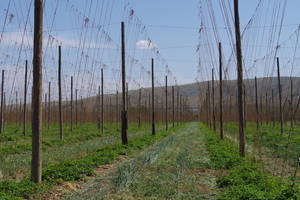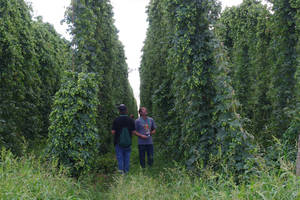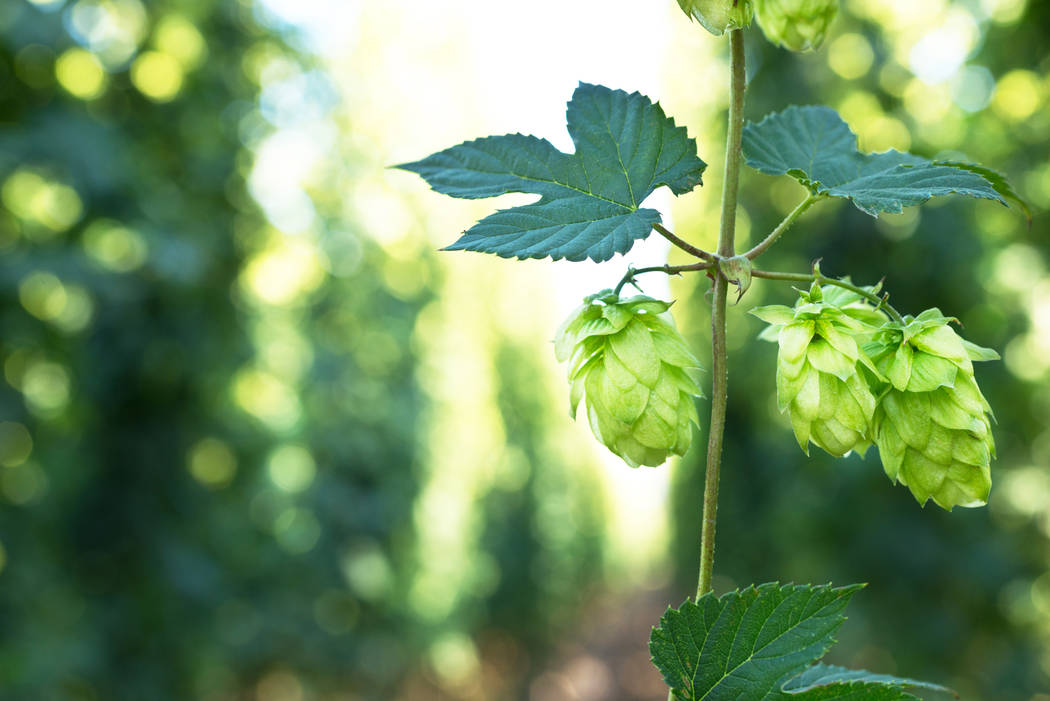

Winter
 For new yards, trellis construction may take place after harvest in the late fall and early winter, as well as springtime.
For new yards, trellis construction may take place after harvest in the late fall and early winter, as well as springtime.
Spring
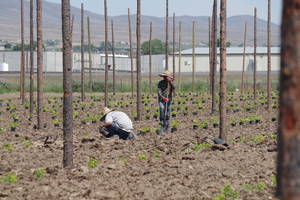 New hop yards are planted from rhizomes or potted plants. Rhizomes are planted in early spring, and potted plants are planted later, after the danger of frost has passed.
New hop yards are planted from rhizomes or potted plants. Rhizomes are planted in early spring, and potted plants are planted later, after the danger of frost has passed. Initial fertilizer applications are applied. Based on soil tests, each field is treated with nutrients at the levels needed for healthy plant growth. Nutrients will continue to be applied throughout the season as determined by plant tissue analyses.
Initial fertilizer applications are applied. Based on soil tests, each field is treated with nutrients at the levels needed for healthy plant growth. Nutrients will continue to be applied throughout the season as determined by plant tissue analyses.  Primary shoots emerge from the hop crowns. In established yards, primary shoots are generally pruned to eliminate early disease inoculum and to set training dates.
Primary shoots emerge from the hop crowns. In established yards, primary shoots are generally pruned to eliminate early disease inoculum and to set training dates. Twining crews manually tie coir (coconut fiber) or paper twine to the overhead trellis structure, while other workers insert the twine into each hill (hop plant).
Twining crews manually tie coir (coconut fiber) or paper twine to the overhead trellis structure, while other workers insert the twine into each hill (hop plant). 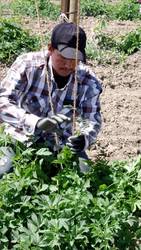 Training dates are established. Each farm determines these by looking at a number of factors including growth rates, bloom dates, cone development, and the historical trends of each variety and field location. With the addition of so many varieties on farms now, picking windows of other varieties are noted when selecting training dates. Depending on plant vigor, value of the variety, labor factors, and weather, additional training can be scheduled one or more times to increase the crop size per bine as new shoots emerge.
Training dates are established. Each farm determines these by looking at a number of factors including growth rates, bloom dates, cone development, and the historical trends of each variety and field location. With the addition of so many varieties on farms now, picking windows of other varieties are noted when selecting training dates. Depending on plant vigor, value of the variety, labor factors, and weather, additional training can be scheduled one or more times to increase the crop size per bine as new shoots emerge. 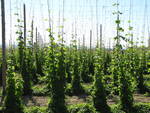
Summer
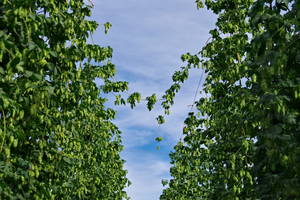 Bines expand with sidearms that will bear the crop. First, burrs emerge and then cones develop. Early varieties start to bloom around the summer solstice. Alpha varieties tend to bloom later, generally early July.
Bines expand with sidearms that will bear the crop. First, burrs emerge and then cones develop. Early varieties start to bloom around the summer solstice. Alpha varieties tend to bloom later, generally early July.
Fall
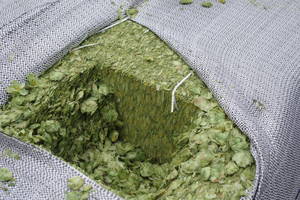 As hops are harvested, dried and baled, Department of Agriculture inspectors collect official samples for seed, leaf, and stem inspections to verify the quality of the crop for merchants and, ultimately, the brewing customers.
As hops are harvested, dried and baled, Department of Agriculture inspectors collect official samples for seed, leaf, and stem inspections to verify the quality of the crop for merchants and, ultimately, the brewing customers.Liberty Building, 32 N 3rd St - Suite 408 \ Yakima, WA 98901 Mail to: P.O. Box 2885 \ Yakima, WA 98907 1.509.453.4749
